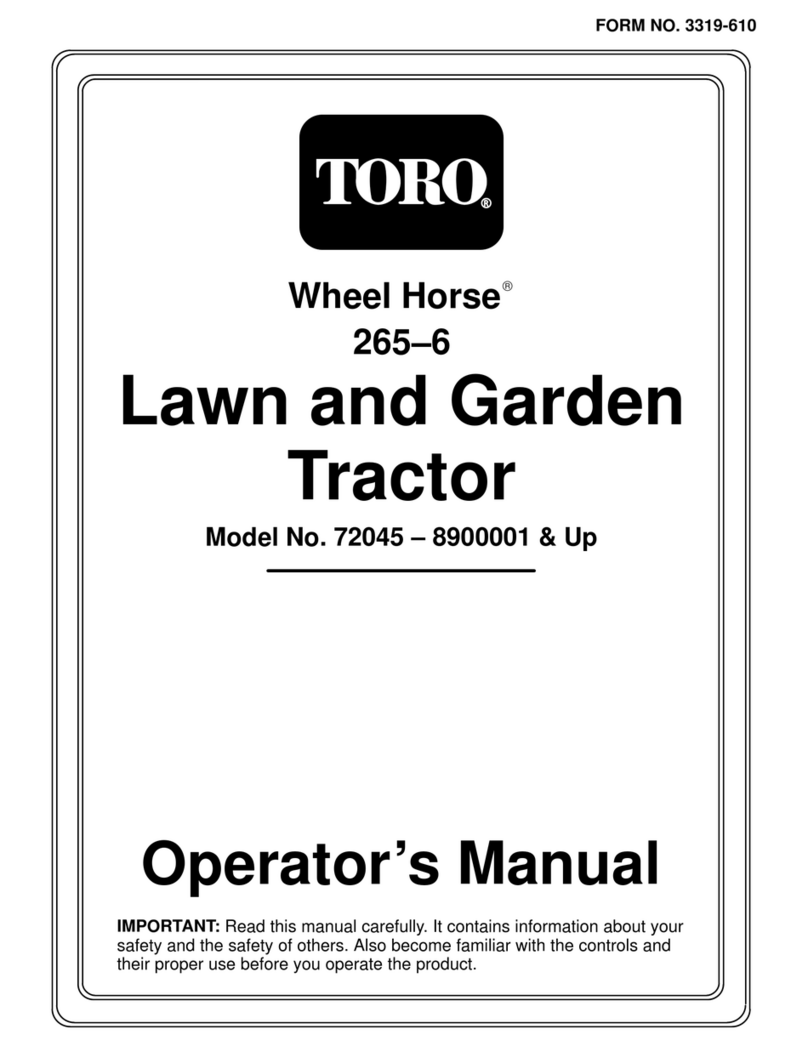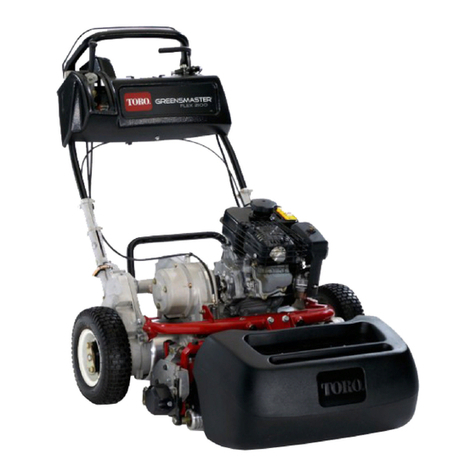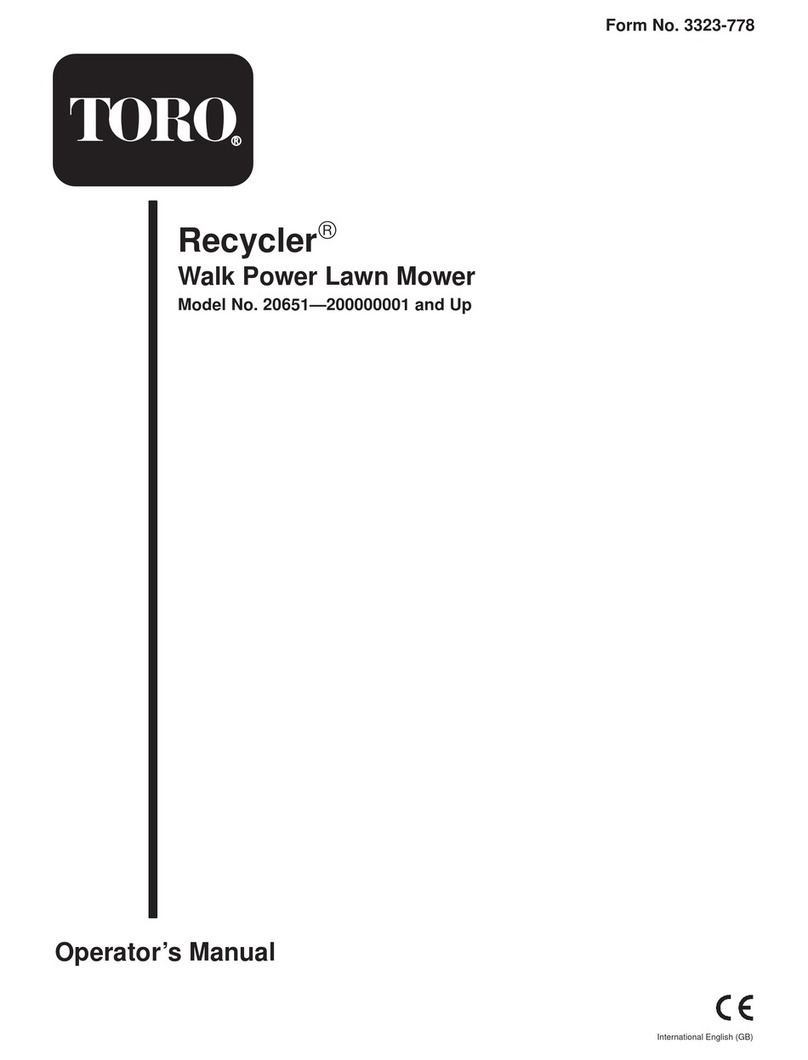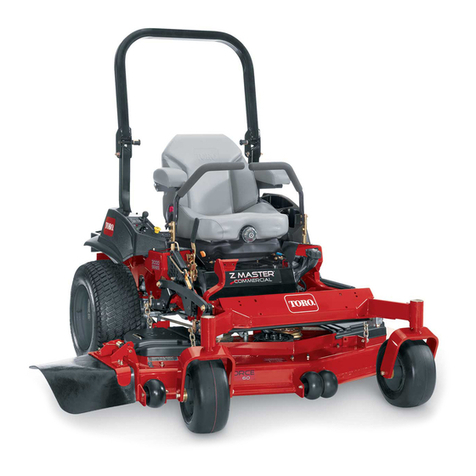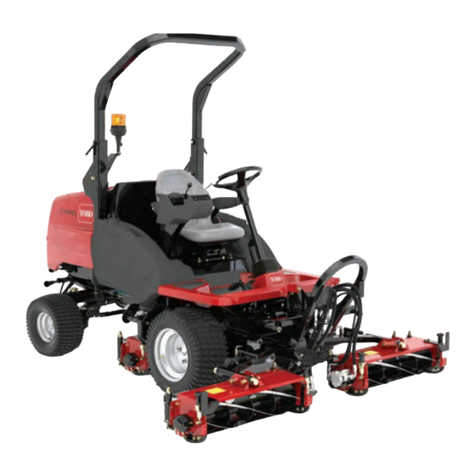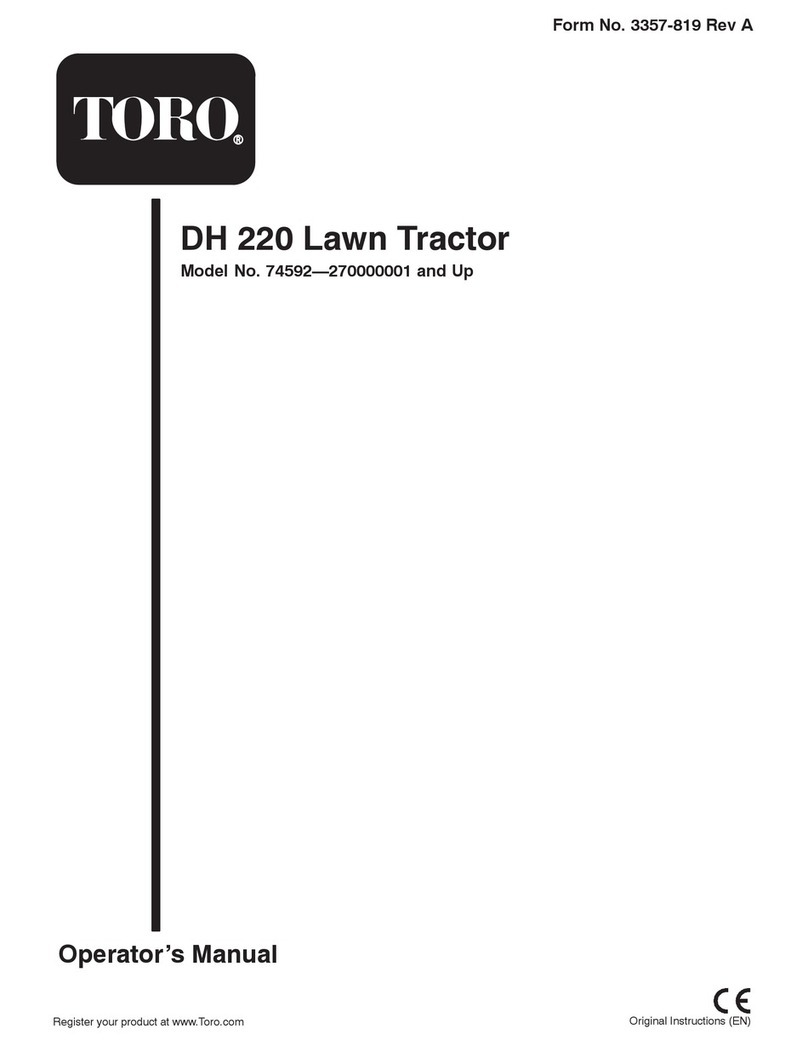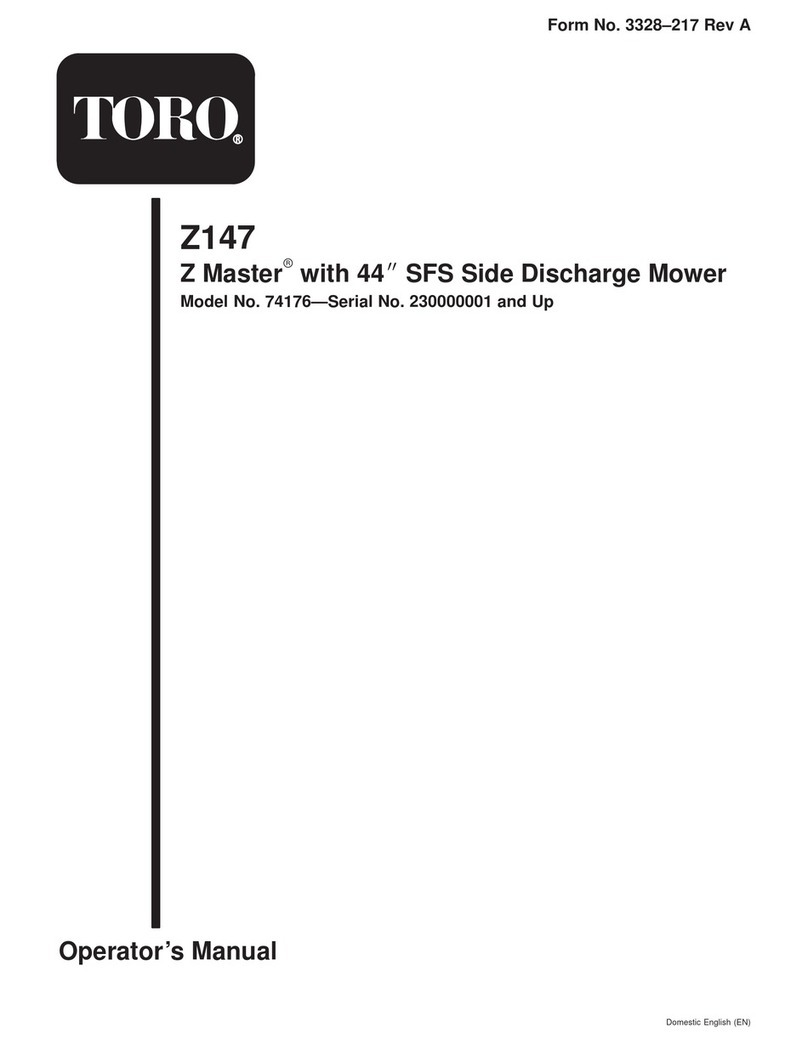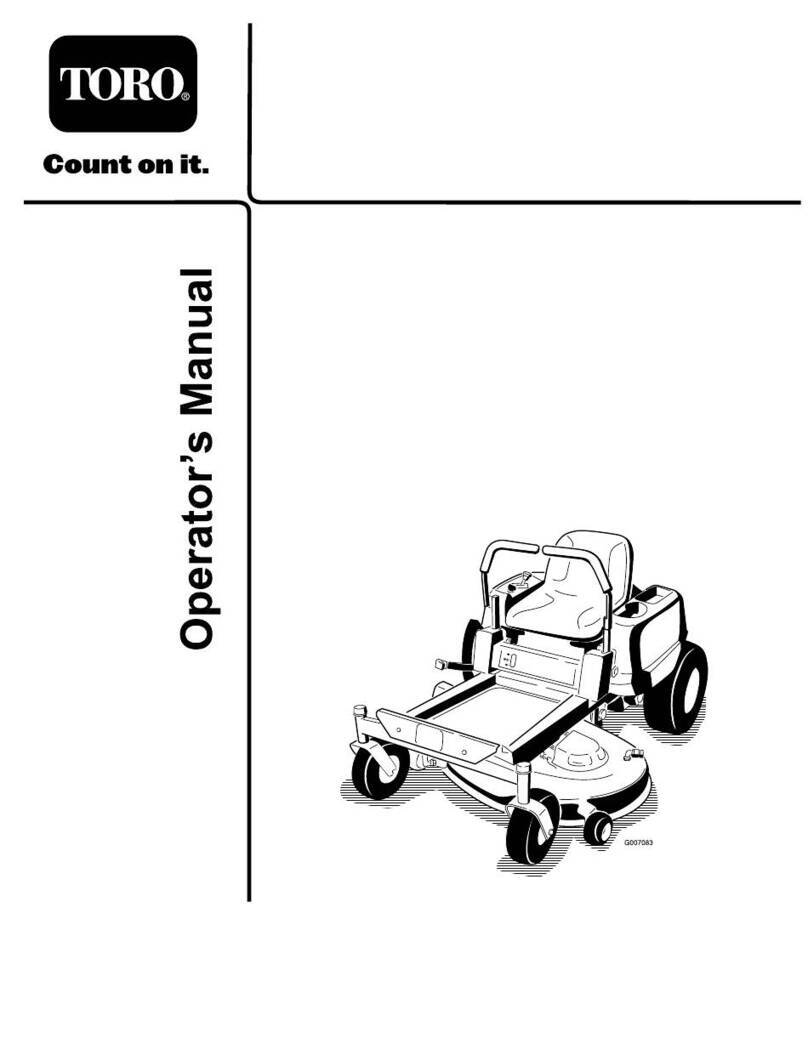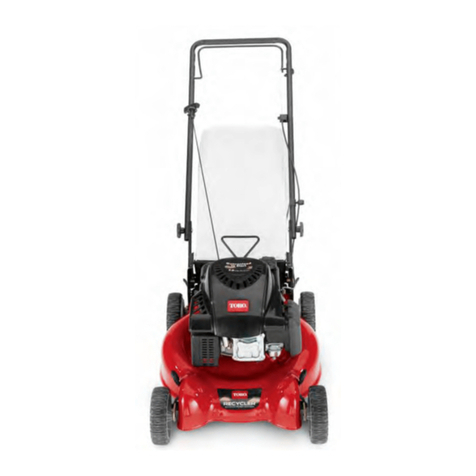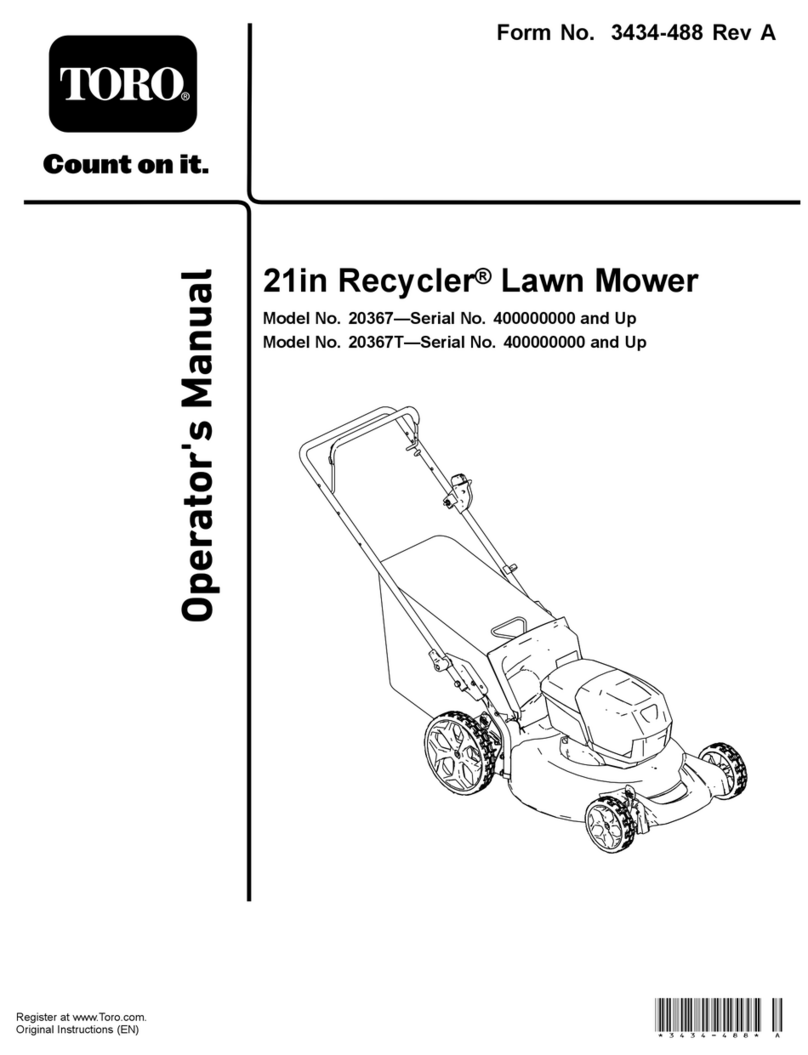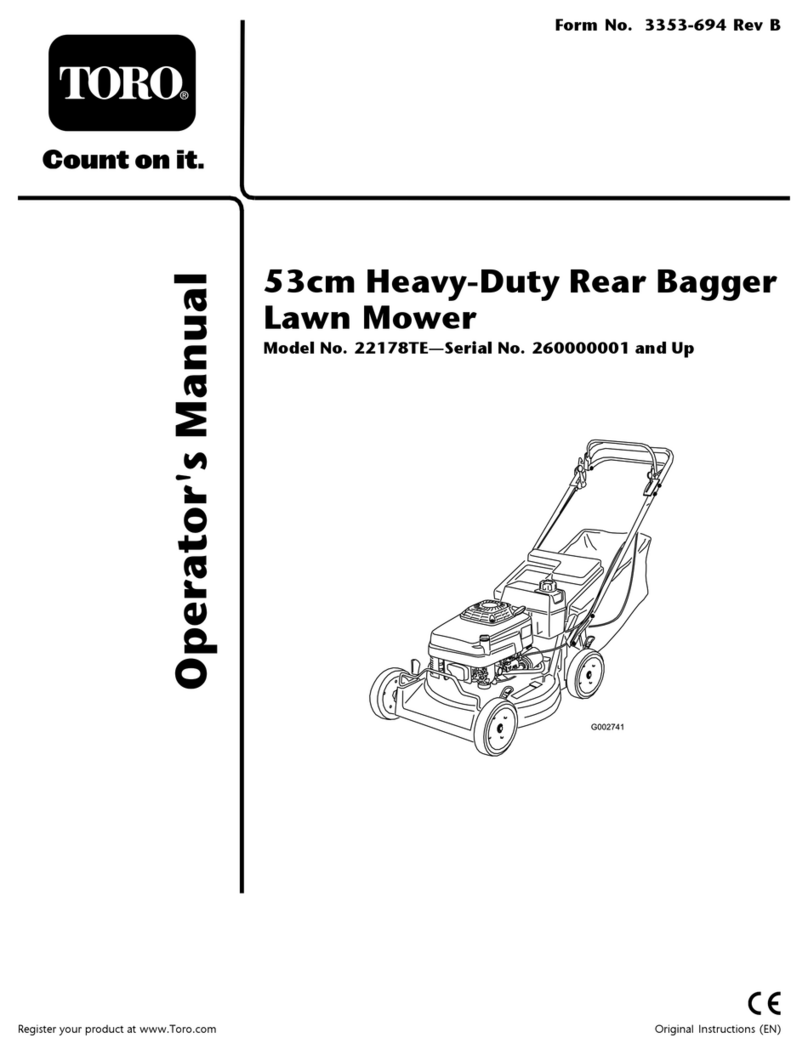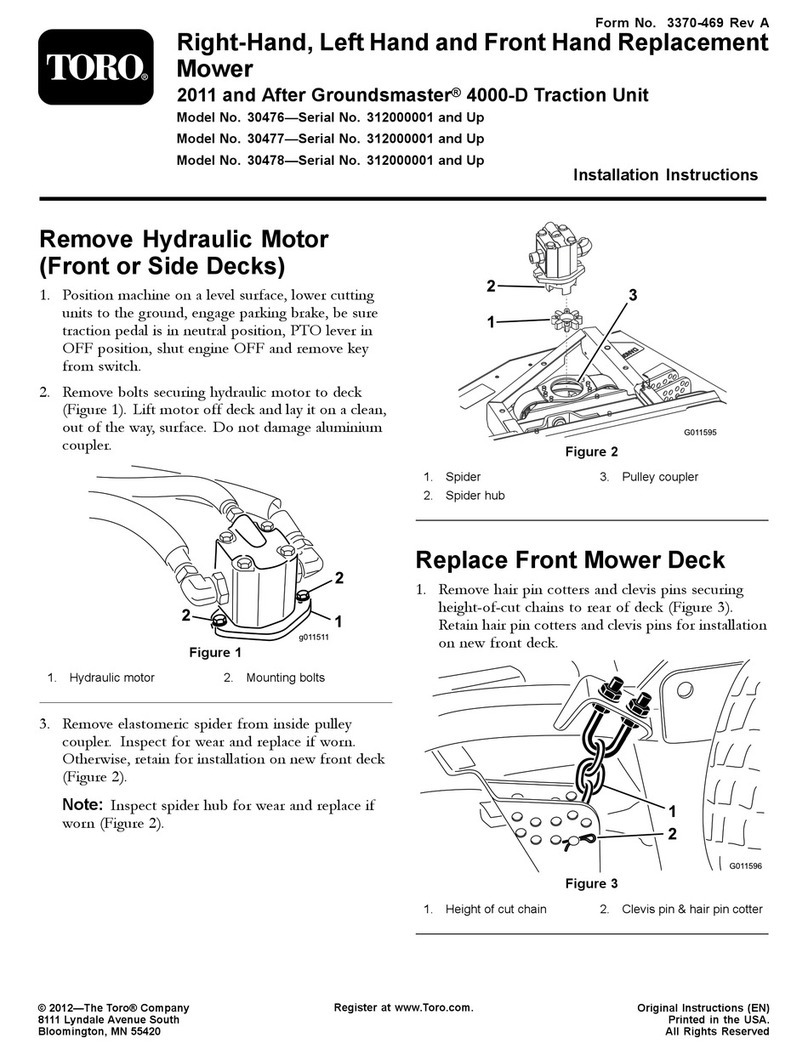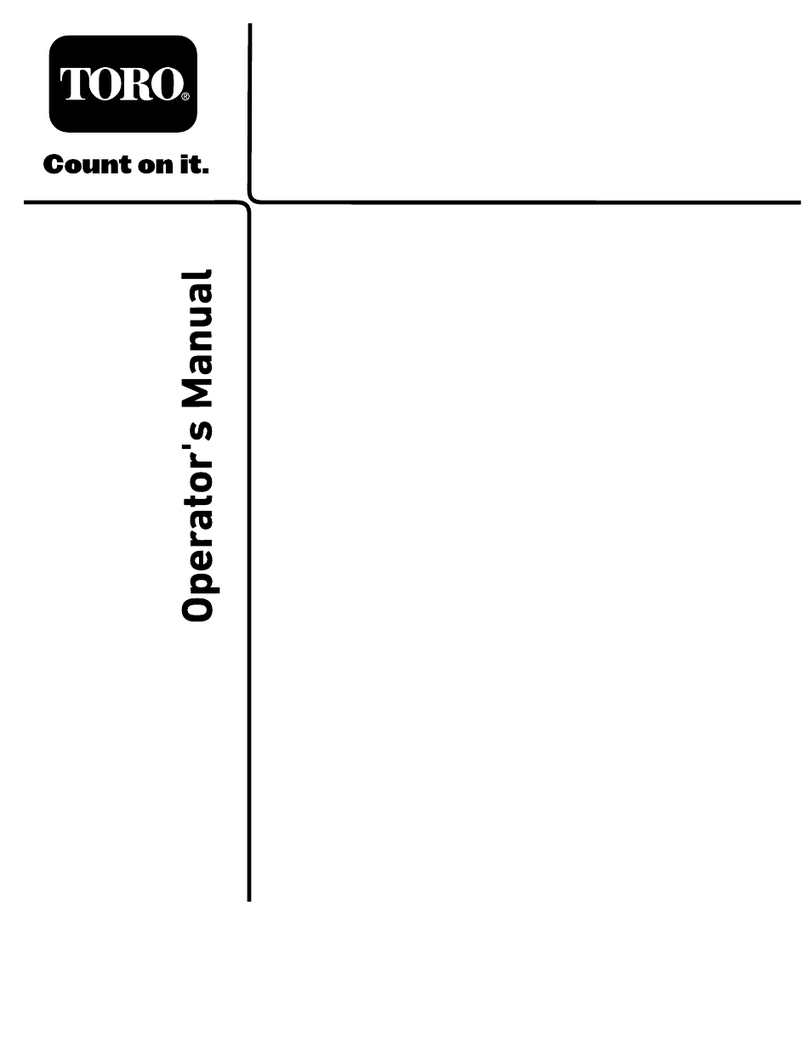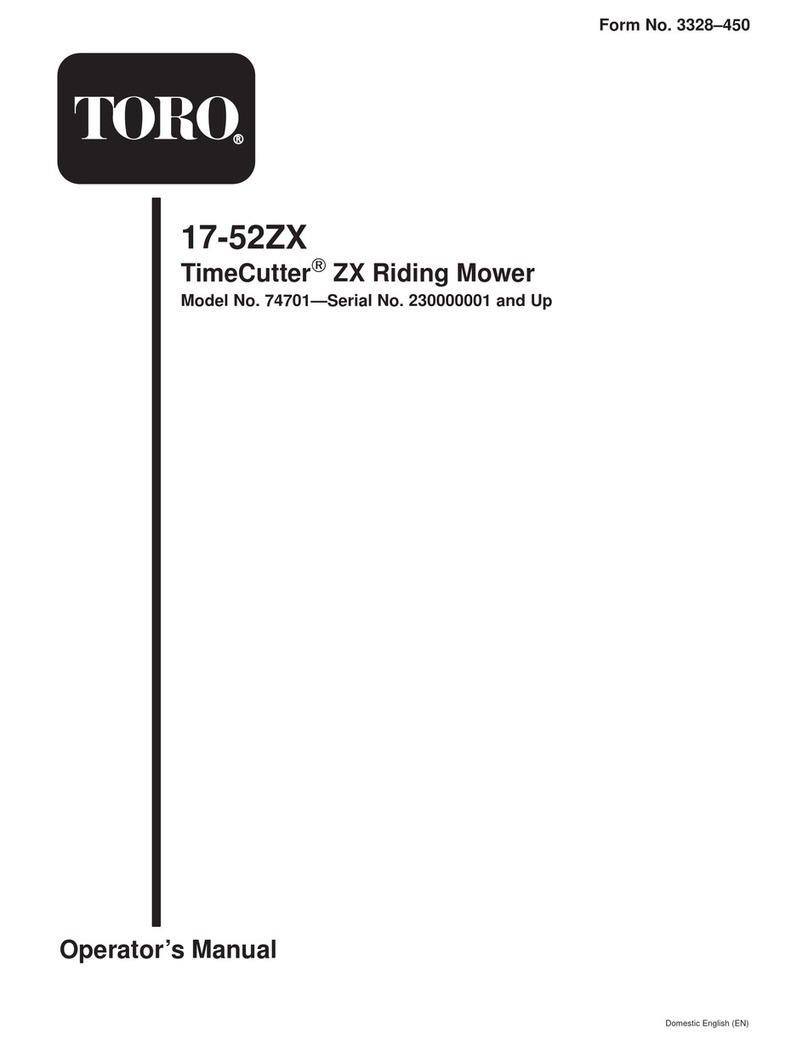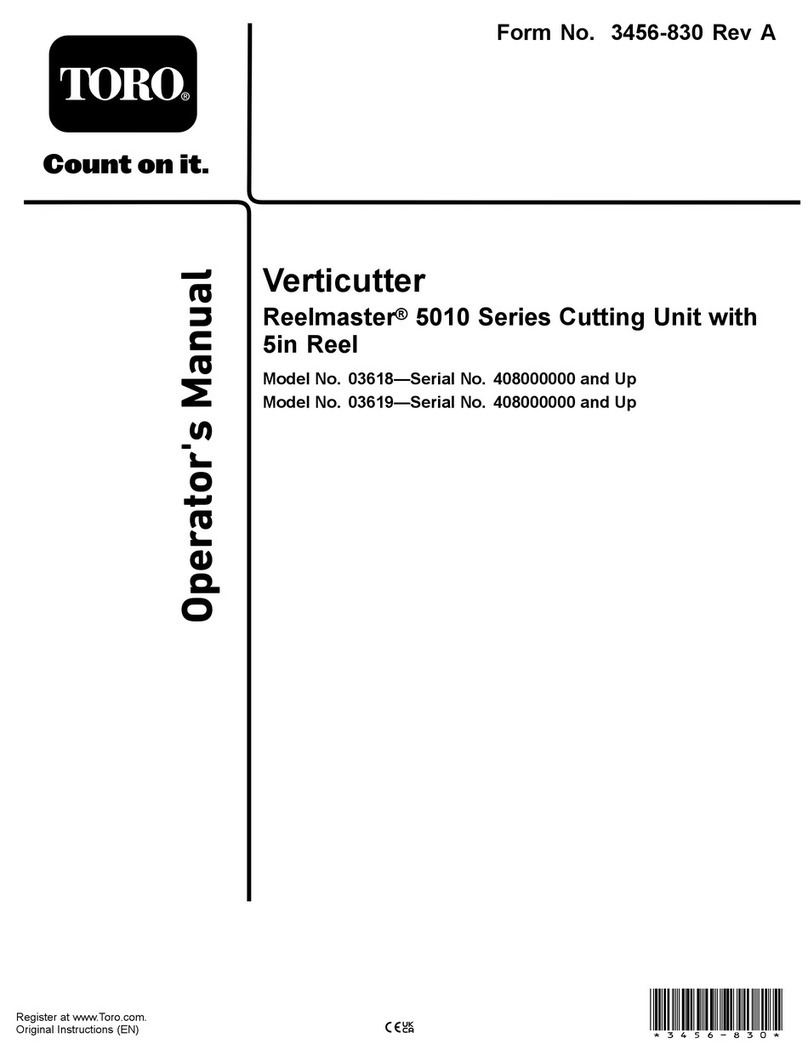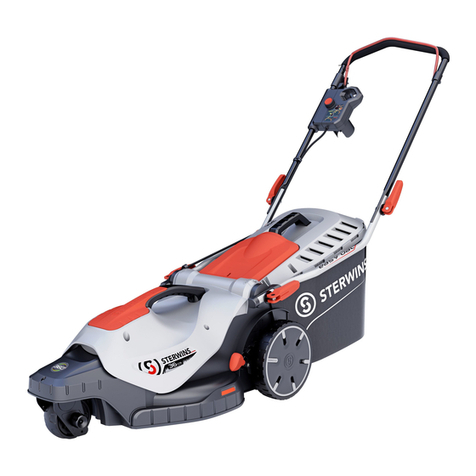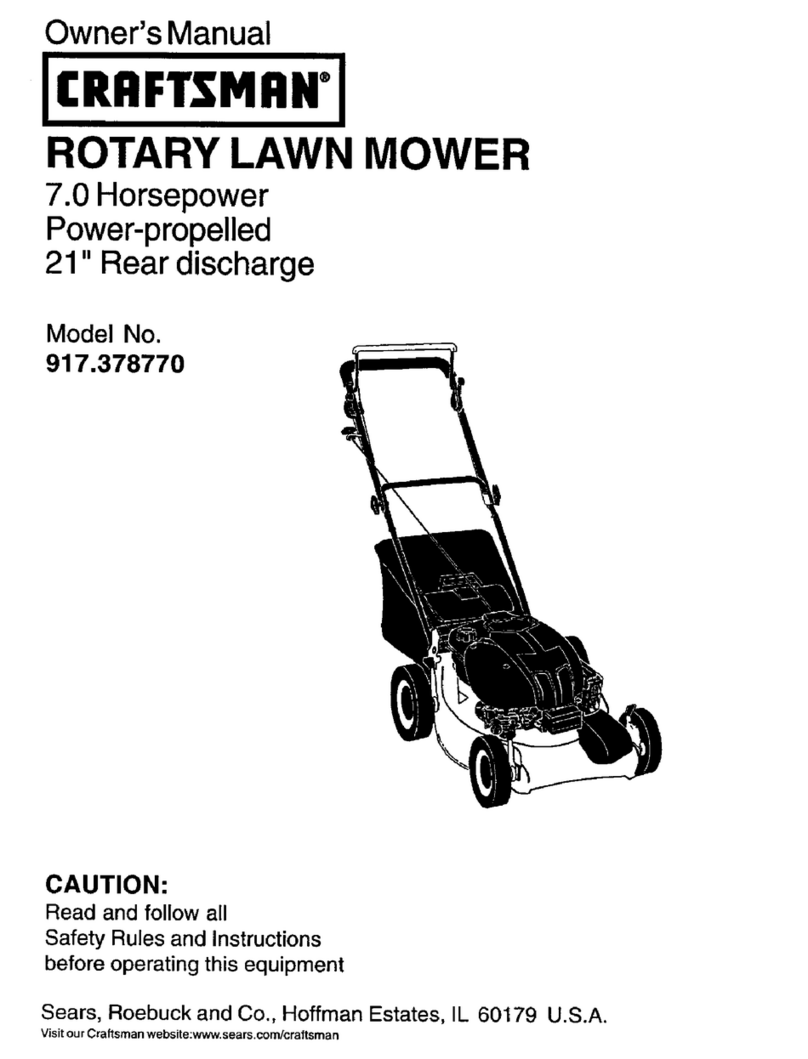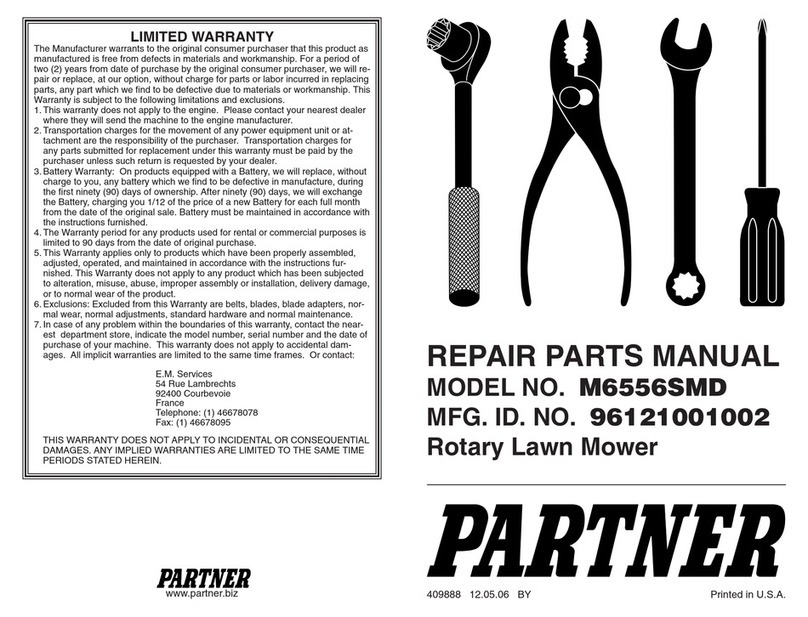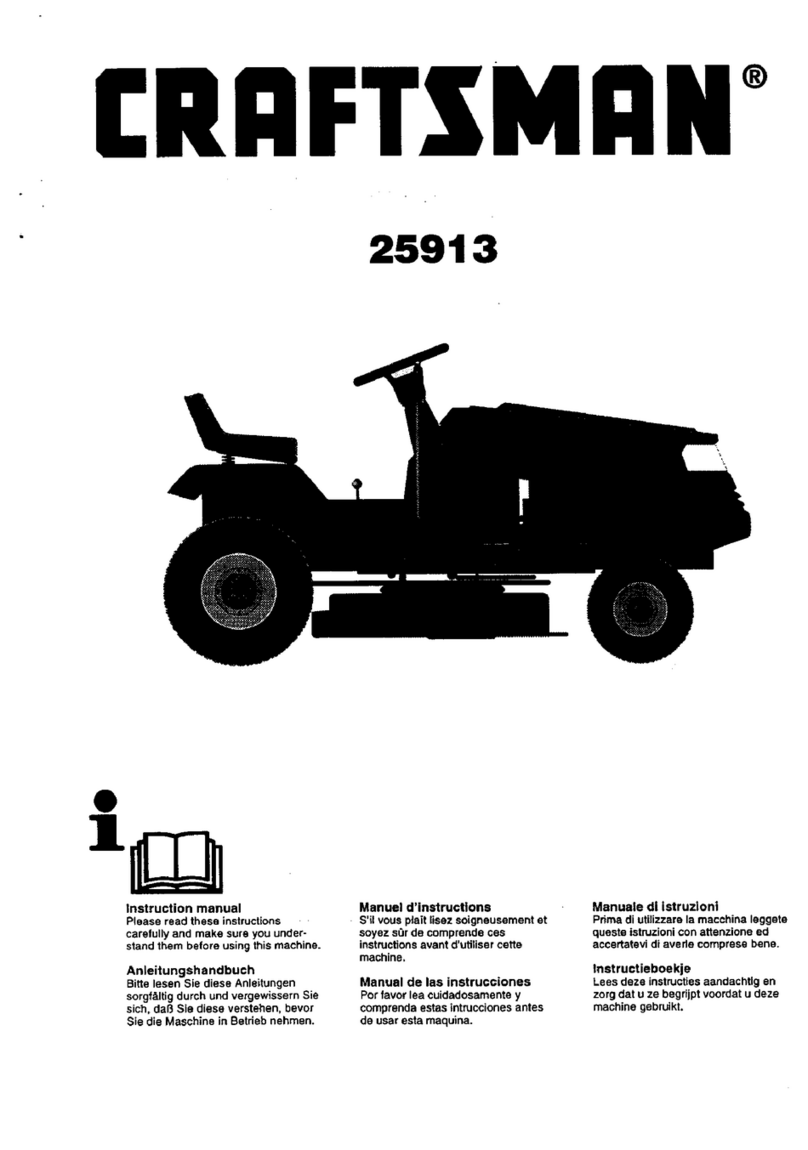
9
Engine: Peugeot, four-cycle, four cylinder, 1.9 liter
(1900 cc) displacement, liquid-cooled diesel engine.
23.5:1 compression ratio. Low idle—1600 rpm, high
idle—2500 rpm. Oil capacity is 5 l (5.3 qt) with the
filter.
Cooling System: Capacity is 13.2 l (3.5 gal) of a
50/50 mixture of Peugeot recommended anti-freeze.
Fuel System: Capacity is 53 l (14 gal) of #1 or #2
diesel fuel.
Hydraulic System: Reservoir capacity is 24.6 l (6.5
gal). Replaceable spin-on filter element.
Traction System: Ground speed: Low Range; 0—
10.5 km/h (0– 6.5 mph); 0–8.8 km/h (0–5.5 mph).
with mechanical speed limiter interlock forward and
0–4.8 km/h (0–3 mph) reverse. High Range; 0–24
km/h (0–15 mph); 0–20 km/h(0–12.4 mph) with
mechanical speed limiter interlock) forward and 0–8
km/h (0–5 mph) reverse.
Front Axle: Two-speed axle is designed to withstand
heavy-duty slope operation and side loading. Separate
mowing and transport selections for faster and more
efficient machine operation. Neutral position allows
easy towing. Lubricated with SAE 80—90 grade EP
gear lubrication. Capacity is 144 oz.
Rear Axles: Two Wheel Drive—The large-diameter
wheel spindles are designed for durability and long
wear, yet provide superior stability and maneuverabili-
ty. Four Wheel Drive—Heavy duty, agricultural type.
Hydraulic drive with “on demand” over running clutch
and balanced weight distribution provides superior
traction on hillsides. Lubricated with SAE 80—90 wt.
EP gear lubrication. Capacity is 80 oz.
Tires/Wheels: High flotation turf tread tires on de-
mountable rims. Front tires: (2) 26 x 12.0-12, 8-ply.
Rear tires: (2) 20 x 10.0-10, 6 ply. Tire pressure
103–138 kPa (15-20 psi.)
Cutting Unit Drive System: Adjustable reel speed to
match clip to ground speed. Reel speed variable from
Approximately 500—1,200 rpm forward to 200—600
rpm reverse (for backlap operation).
Seat: (Model 30772) Adjustable fore and aft travel and
weight.
Diagnostic System: Test ports for forward traction,
cutting circuit, lift and counterbalance circuit, steering
circuit and charge circuit.
Steering System: Automotive type, full power.
Brakes: Totally enclosed, non asbestos, dry multi-
disc individual wheel and parking brakes on front trac-
tion wheels. Brakes controlled by individual pedals
operated by the left foot. Dynamic braking through a
closed-loop hydrostatic drive.
Electrical System: 12-volt battery with 530 cold-
cranking amps @ 0 degrees F. 55-amp alternator,
ammeter, starter, key switch and automatic temperature
controlled glow plug controller. Separately fused, run,
reel and instrument/accessory circuits.
Interlock System: Designed to stop the engine if the
operator gets off the seat while the cutting unit drive
switch is engaged. Prevents the engine from starting
unless the traction pedal is in neutral and the cutting
units are disengaged. Prevents the cutting units from
operating unless the axle shift is in the LO range and.
the cutting units are lowered. Prevents the engine
from starting unless the reel speed control is in
NEUTRAL.
Warning Lights:
Glow plug indicator
Engine oil pressure warning
Engine coolant temperature warning
Charge indicator
Indicators:
Engine coolant temperature gauge
Fuel gauge
Hour meter
Specifications

